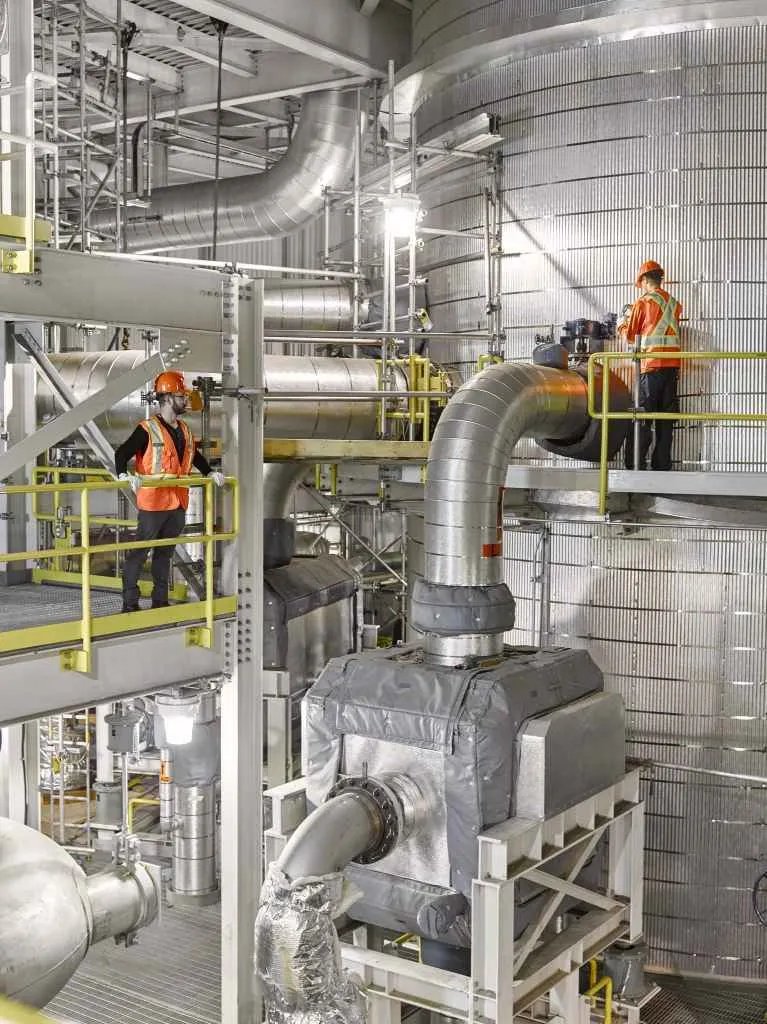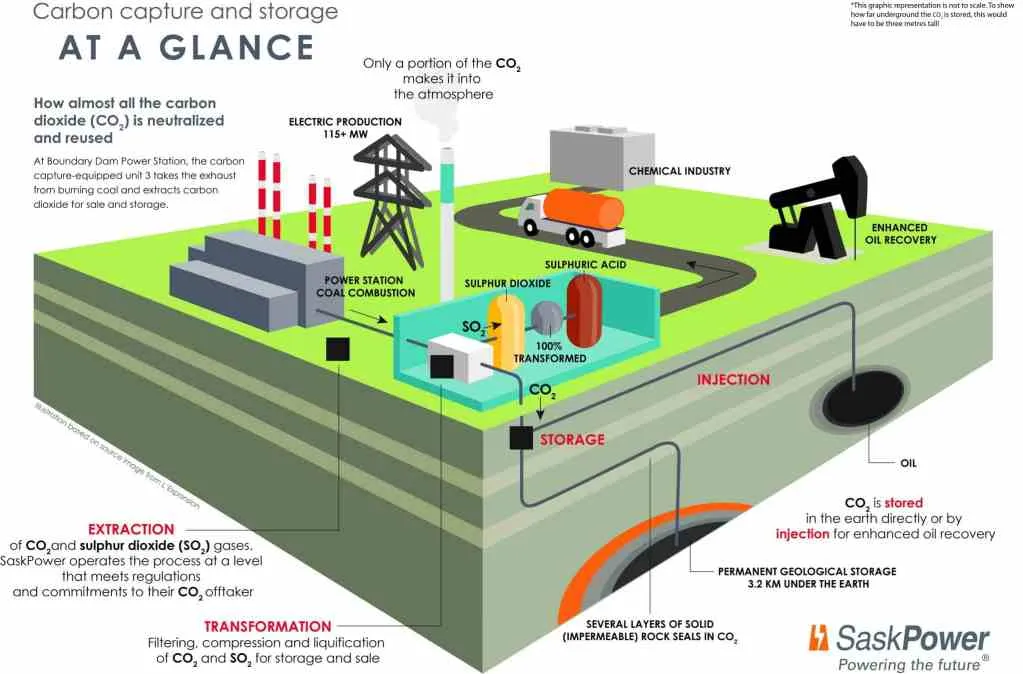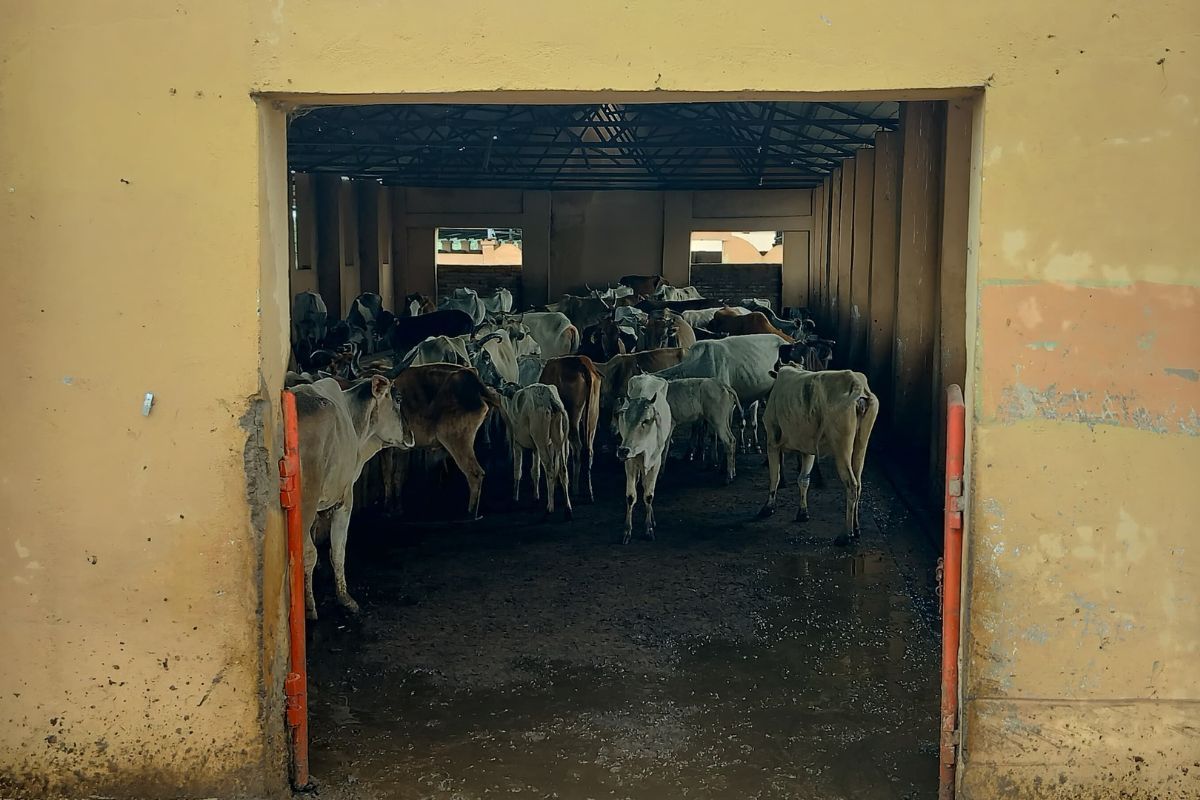The Climate Technology Center and Network (CTCN) explains that carbon capture and storage is a combination of technologies designed to prevent the release of carbon dioxide generated through conventional power generation and industrial production processes. It is done by injecting the carbon dioxide into a suitable underground storage reservoir.

In short, capture technology separates carbon dioxide emissions from the process. After which the compressed carbon dioxide is transported to a suitable geological storage location and injected.
Benefits of Carbon capture technology
According to the British Geological Survey, carbon dioxide can be captured from large sources such as power plants, gas processing facilities and industrial processes.
The International Energy Agency (IEA) states the benefits of using carbon capture technologies such as:
- Retrofitting the power sector with carbon capture technologies will help in addressing emissions from existing fossil fuels.
- Carbon capture technologies are important for achieving climate objectives, particularly in countries that heavily depend on fossils for power generation and where renewable energy potential is limited.
- The use of carbon capture for gas in power generation can help in avoiding 300 MtCO2 by 2040.

Why is it in the news?
The Cut Inflation Act of 2022 is aimed at incentivizing companies to adopt CO2 emissions, also known as carbon sequestration. The act provides a financial incentive of $180 per ton to companies that capture carbon from the air using Direct Air Capture (DAC) methods. The aim is to reduce carbon emissions and help the US meet its climate goals.
If power plant operators can adopt DAC systems that cost less than $180 per ton to operate, they can make a profit while also contributing to the reduction of carbon emissions.
Environmentalists believe that simply reducing carbon emissions is no longer sufficient to prevent the most severe impacts of climate change. Therefore, it is necessary to reduce the overall amount of CO2 in the atmosphere. Human activities emitted around 40 billion tons of carbon into the atmosphere last year, according to the International Energy Agency.
Carbon capture offers a possibility of transitioning away from fossil fuels without entirely shutting down the oil and gas industry. This industry is a significant contributor to the economy and job market, especially in rural states such as Alaska, North Dakota, Oklahoma, and Wyoming.
Is it just a disguise for oil companies?
However, there has been controversy surrounding the carbon capture technology. The Climate Council states that carbon capture and storage is a license to ramp up emissions. Greg Bourne, Climate Councillor and Energy expert claims that
“Carbon capture and storage is not a climate solution, but an expensive attempt to prolong the role of fossil fuels in the energy system.”
A report by the Institute for Energy Economics and Financial Analysis (IEEFA) reveals that the majority of carbon capture and storage technology have pumped captured gas into depleted oil fields in an effort to extract the last droplets of oil, the process is called Enhanced Oil Recovery (EOR).
For example, about 28 million tonnes out of 39 million tonnes of carbon dioxide captured by multi-billion-dollar carbon capture and storage facilities is re-injected in oil fields. And, this is done to push more oil out of the ground.
The report also states that observing the total anthropogenic carbon humans have captured during the last 50 years demonstrates that CO2 has benefitted the oil industry. IEEFA estimates that about 80-90% of the 300 million tonnes of CO2 have been used for Enhanced Oil Recovery. Furthermore, only 10-20% of it has been stored in specific geological structures.
Support us to keep independent environmental journalism alive in India.
Keep Reading
Part 1: Cloudburst in Ganderbal’s Padabal village & unfulfilled promises
India braces for intense 2024 monsoon amid recent deadly weather trends
Follow Ground Report on X, Instagram and Facebook for environmental and underreported stories from the margins. Give us feedback on our email id greport2018@gmail.com.
Don’t forget to Subscribe to our weekly newsletter, Join our community on WhatsApp, and Follow our YouTube Channel for video stories.









